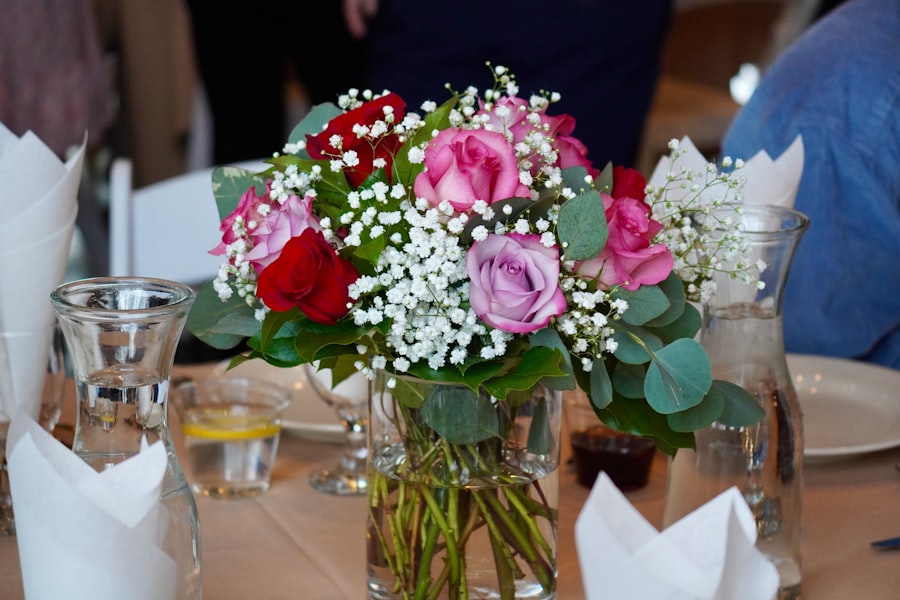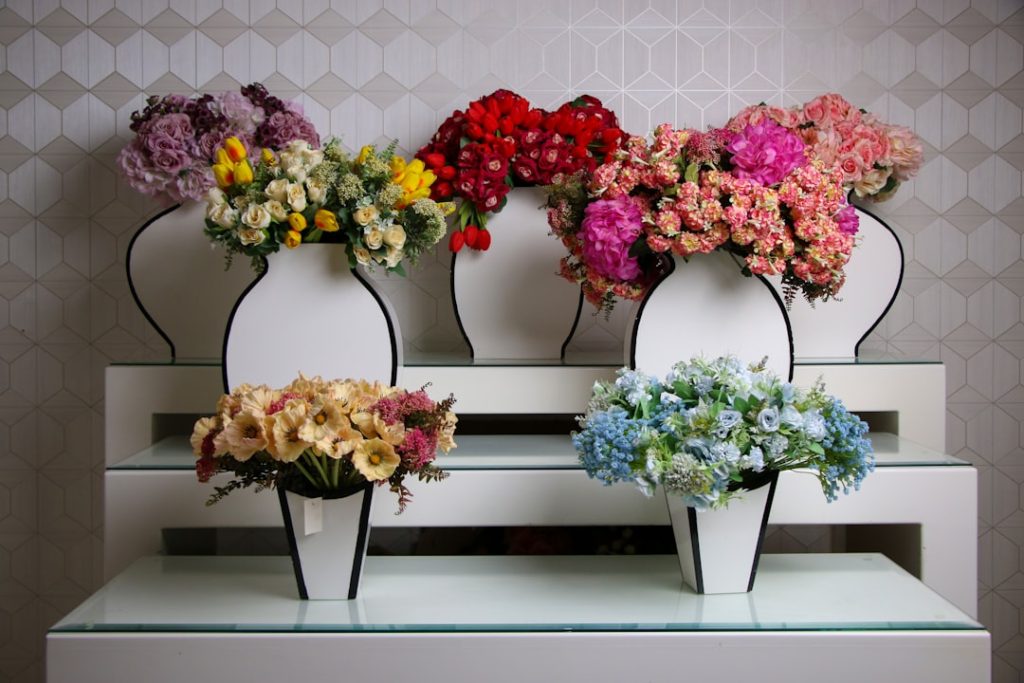When we embark on the journey of planning an event, one of the first considerations that often comes to mind is the budget. Establishing a clear financial framework is essential for ensuring that we can achieve our vision without overspending. We must take the time to outline our priorities and determine how much we are willing to allocate to various aspects of the event, including flowers, decor, and other essential services.
By doing so, we can create a realistic budget that reflects our desires while keeping our financial goals in check. As we delve deeper into the pricing of floral arrangements and services, we quickly realize that costs can vary significantly based on several factors. The type of flowers we choose, the complexity of the arrangements, and the overall scale of our event all play a crucial role in determining the final price.
It is important for us to research and compare different florists, understanding their pricing structures and what is included in their services. By gathering multiple quotes and being transparent about our budget, we can find a florist who aligns with our financial expectations while still delivering beautiful arrangements that enhance our event.
Key Takeaways
- Budget and Pricing:
- Set a clear budget for your wedding flowers and communicate it with your florist.
- Ask for a detailed breakdown of pricing to understand what you are paying for.
- Flower Availability and Seasonality:
- Consider the seasonality of flowers when choosing your wedding date.
- Be open to alternative flower options if your preferred blooms are not in season.
- Design and Style:
- Provide your florist with inspiration and ideas for the design and style you want.
- Trust your florist’s expertise in creating a cohesive and beautiful floral design.
- Venue and Ceremony Space:
- Take into account the size and layout of your venue when planning your floral arrangements.
- Discuss any restrictions or guidelines with your venue regarding floral decor.
- Delivery and Set-Up:
- Confirm the delivery and set-up details with your florist well in advance.
- Provide clear instructions and contact information for the venue or ceremony space.
- Additional Services and Decor:
- Inquire about additional services such as floral installations or rental items.
- Discuss any specific decor elements you want to incorporate into your floral design.
- Contract and Payment Schedule:
- Review the contract thoroughly and ensure all details are included and agreed upon.
- Understand the payment schedule and any cancellation or refund policies.
- Communication and Follow-Up:
- Maintain open communication with your florist throughout the planning process.
- Follow up with your florist closer to the wedding date to confirm all details.
Flower Availability and Seasonality
Understanding flower availability and seasonality is another critical aspect of our planning process. Different flowers bloom at various times of the year, which means that some may be more accessible and affordable during certain seasons. As we explore our options, we should consider incorporating seasonal blooms into our arrangements.
Not only do these flowers tend to be fresher and more vibrant, but they also often come at a lower cost compared to out-of-season varieties that may need to be imported. Moreover, embracing seasonal flowers allows us to create arrangements that reflect the natural beauty of the time of year. For instance, spring offers a plethora of colorful blooms like tulips and daffodils, while autumn brings rich hues with chrysanthemums and dahlias.
By aligning our floral choices with the season, we can enhance the overall aesthetic of our event and create a cohesive theme that resonates with our guests. This thoughtful approach not only elevates the visual appeal but also adds a layer of authenticity to our celebration.
Design and Style

As we begin to envision the design and style of our floral arrangements, it becomes clear that this is where our personal tastes can truly shine. We have the opportunity to express ourselves through color palettes, flower types, and arrangement styles that reflect our unique personalities and the overall theme of our event. Whether we lean towards classic elegance with white roses and greenery or prefer a more eclectic mix of vibrant blooms, the choices we make will set the tone for the entire occasion.
In addition to personal preferences, we should also consider how our floral designs will complement the venue and overall decor. The right arrangements can enhance the atmosphere, drawing attention to key areas such as the altar or reception tables. We might want to collaborate closely with our florist to ensure that our vision aligns with their expertise.
By sharing inspiration images and discussing our ideas openly, we can work together to create stunning floral designs that not only meet our expectations but also elevate the entire event experience for ourselves and our guests.
Venue and Ceremony Space
The venue plays a pivotal role in shaping our event’s ambiance, and it is essential for us to consider how it interacts with our floral choices. Each space has its own character, which can influence how we approach our floral design. For instance, a rustic barn may call for wildflowers and natural elements, while an elegant ballroom might lend itself to more formal arrangements with luxurious blooms.
By taking into account the venue’s architecture and decor, we can select flowers that harmonize with the surroundings. Additionally, we must think about how flowers will be arranged within the ceremony space itself. Will we need large installations or simple centerpieces?
Are there specific focal points where floral arrangements will be placed? Understanding these details allows us to maximize the impact of our floral designs while ensuring they enhance rather than overwhelm the space. By collaborating with both our florist and venue coordinator, we can create a seamless integration of flowers into the overall design of our event.
Delivery and Set-Up
As we finalize our floral arrangements, one crucial aspect that cannot be overlooked is delivery and set-up logistics. We need to ensure that flowers arrive at the venue on time and in pristine condition. This requires clear communication with our florist regarding delivery times and any specific requirements for handling delicate blooms.
We should also discuss whether they will provide set-up services or if we need to arrange for someone else to handle this task. The set-up process is where our vision truly comes to life. It is essential for us to be present during this time or have a trusted point person who can oversee the arrangement of flowers according to our plan.
We want to ensure that everything is positioned perfectly, from altar arrangements to table centerpieces. By being involved in this process, we can make any last-minute adjustments and ensure that every detail aligns with our expectations.
Additional Services and Decor

In addition to floral arrangements, many florists offer a range of additional services that can enhance our event’s overall aesthetic. These may include rental items such as vases, arches, or backdrops that complement our floral designs. As we explore these options, it is important for us to consider how they fit into our budget and whether they align with our vision for the event.
Furthermore, we should think about how additional decor elements can work in tandem with our flowers. For example, incorporating candles or lighting can create a warm ambiance that enhances the beauty of our floral arrangements. By discussing these possibilities with our florist, we can develop a cohesive design plan that elevates every aspect of our event while ensuring that all elements work harmoniously together.
Contract and Payment Schedule
Once we have settled on a florist and finalized our floral designs, it is time to review the contract and payment schedule carefully. This document outlines all agreed-upon details, including pricing, delivery dates, and any additional services provided. We must ensure that everything is clearly stated to avoid any misunderstandings later on.
If there are any uncertainties or questions about specific terms, it is crucial for us to address them before signing. The payment schedule is another important aspect to consider. Many florists require a deposit upfront to secure their services, followed by additional payments leading up to the event date.
Understanding this timeline helps us manage our budget effectively while ensuring that all financial obligations are met on time. By keeping open lines of communication with our florist regarding payments, we can maintain a positive working relationship throughout the planning process.
Communication and Follow-Up
Effective communication is key throughout the entire planning process, especially when it comes to working with florists. We should feel comfortable reaching out with questions or concerns at any stage leading up to the event. Regular check-ins can help us stay informed about any changes or updates regarding flower availability or design adjustments.
By fostering this open dialogue, we can ensure that everyone is on the same page as we approach the big day. After the event has concluded, it is also important for us to follow up with our florist. Expressing gratitude for their hard work not only strengthens our relationship but also provides valuable feedback for their future endeavors.
Whether through a simple thank-you note or an online review, sharing our experience helps support their business while allowing us to reflect on how beautifully their arrangements contributed to our special day. In this way, communication becomes a vital part of not just planning but also celebrating the success of our event together.
